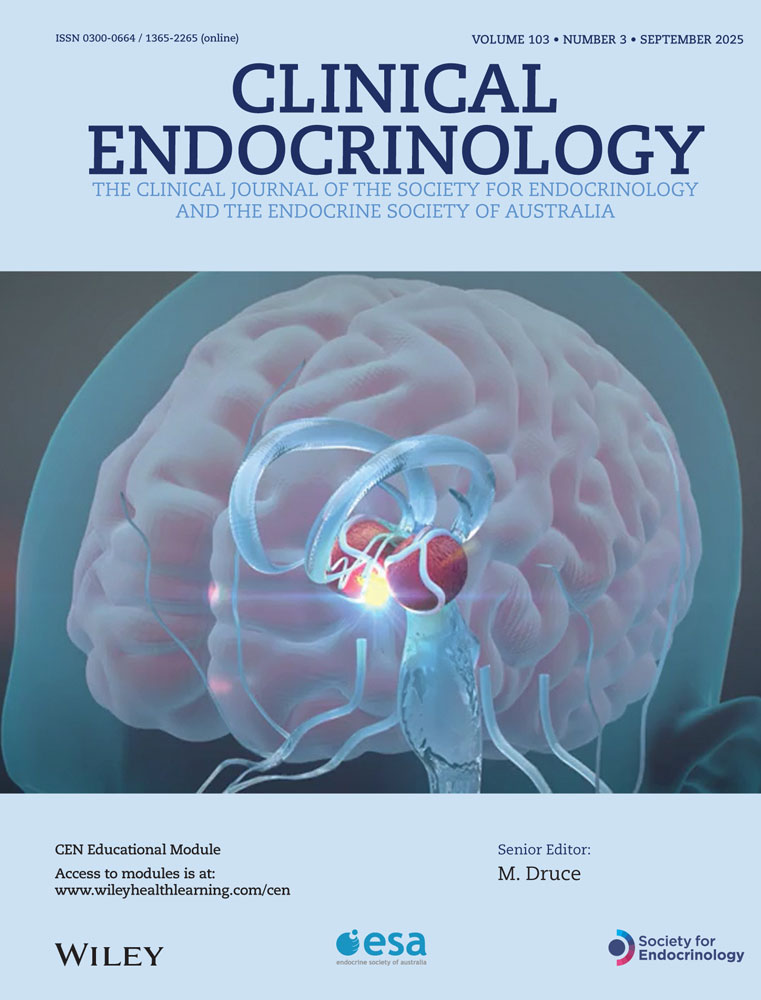Functional evidence for two types of parathyroid adenoma
Abstract
OBJECTIVE
The carboxyterminal parathyroid hormone (C-PTH)/intact (I-) PTH ratio is influenced by serum calcium concentrations in man, increasing to a maximum value in hypercalcaemia and decreasing to a minimum value in hypocalcaemia. We decided to use this ratio to screen for parathyroid tumour with a normal sensitivity to calcium, symptomatic mainly through a mass effect.
DESIGN AND SUBJECTS
Nineteen patients with hypercalcaemia and elevated or inappropriate PTH, were studied in the basal state and during CaCl2 and Na2EDTA infusion and compared with 26 normal individuals. They all had one parathyroid adenoma removed surgically, and two remained hypercalcaemic.
RESULTS
In the basal state, the patients were hypercalcaemic (ionized calcium 1.44 ± 0.12 vs. 1.23 ± 0.03 mmol/l, P < 0.001) and had elevated PTH levels (I-PTH: 10.8 ± 8.0 vs. 2.3 ± 0.6 pmol/l, P < 0.001; C-PTH: 31.6 ± 38.9 vs. 5.25 ± 1.11 pmol/l, P < 0.001) when compared with normals. Their mean C-PTH/I-PTH ratio was similar to normals (2.7 ± 1.3 vs. 2.4 ± 0.6, NS) but, when individual values were considered, three patients had elevated values at 4.9, 5.3 and 5.8 (normal = 1.2–3.6). The regression line between basal C- and I-PTH revealed a significantly higher slope in these patients (P < 0.0001). The 16 patients with a normal basal C-PTH/I-PTH ratio had, as a group, an increased set point of I- or C-PTH stimulation by calcium and increased values of stimulated and non-suppressible I- and C-PTH, but these abnormalities were not all present in the smaller tumours (≤200 mg). Only three tumours in that group were larger than 1000 mg. Serum calcium concentration was related to the increased set point and non-suppressible fraction of I-PTH in these patients (r2 = 0.797). The three patients with a high basal C-PTH/I-PTH ratio had large tumours (2346, 4364 and 17 300 mg) and were more difficult to study, requiring a larger decrease in calcium concentration to achieve maximal stimulation. In the basal state, they were already expressing a non-suppressible level of I- or C-PTH and already had a maximal C-PTH/I-PTH ratio. Our data further suggest a normal set point of I- and C-PTH stimulation in the two patients who achieved sufficient hypocalcaemia and a normal set point of C-PTH/I-PTH ratio modulation in these three patients. Their hypercalcaemia was essentially related to the non-suppressible fraction of PTH. Furthermore, larger tumours were less active than smaller ones and produced less stimulated I-PTH/100 mg of tissue.
CONCLUSIONS
These data indicate two types of parathyroid tumours when calcium sensitivity is considered: (1) a majority of small tumours with abnormal sensitivity to calcium, symptomatic through an abnormal set point and an increased non-suppressible fraction and (2) a smaller number of larger tumours, with normal sensitivity to calcium and an increased non-suppressible fraction, of PTH.




